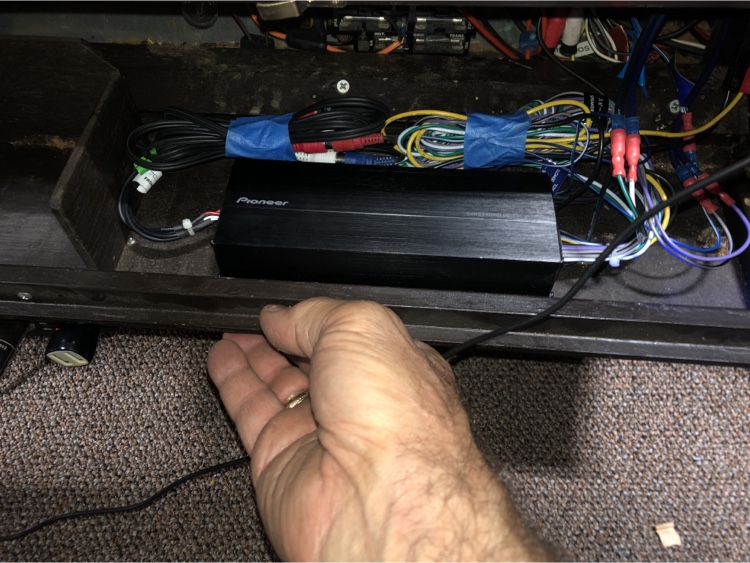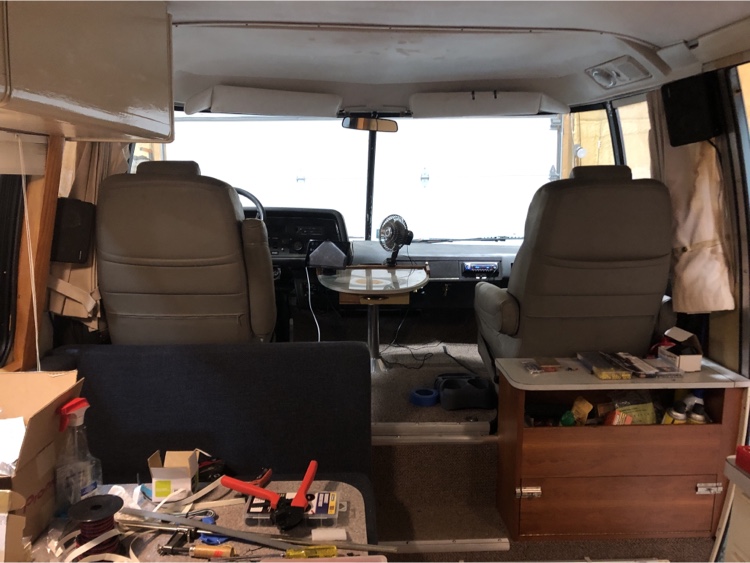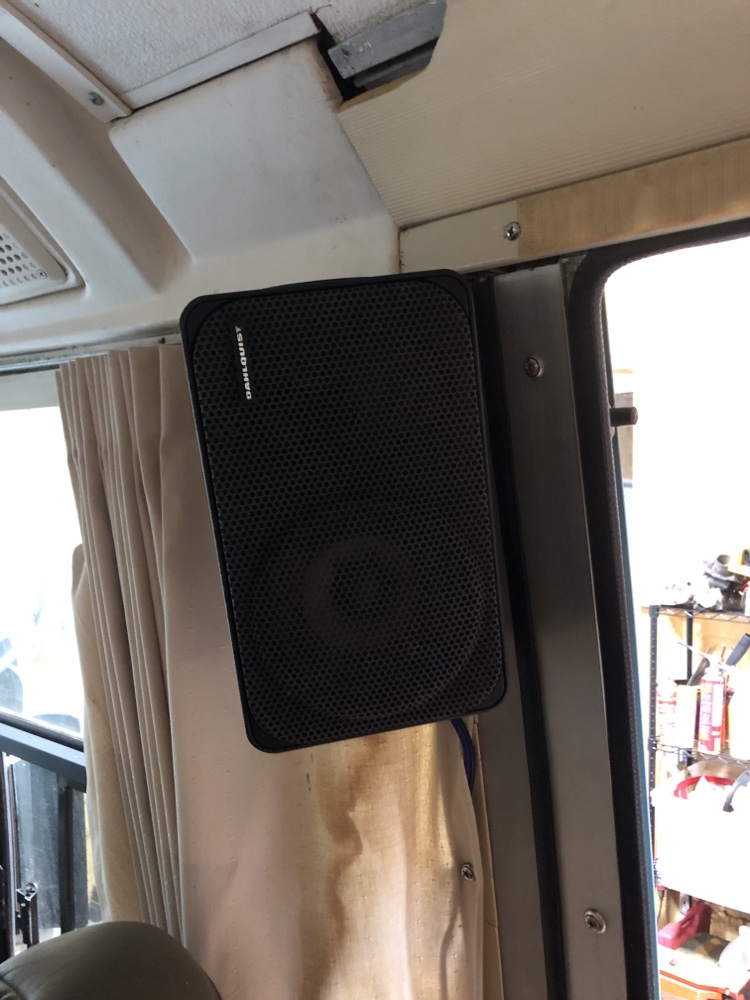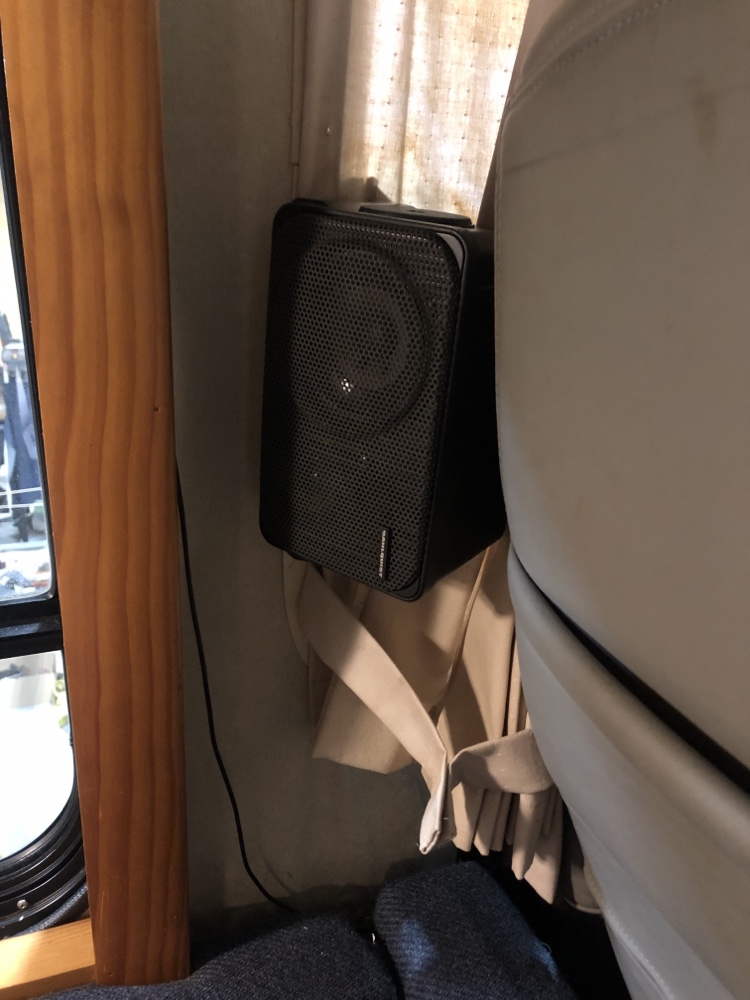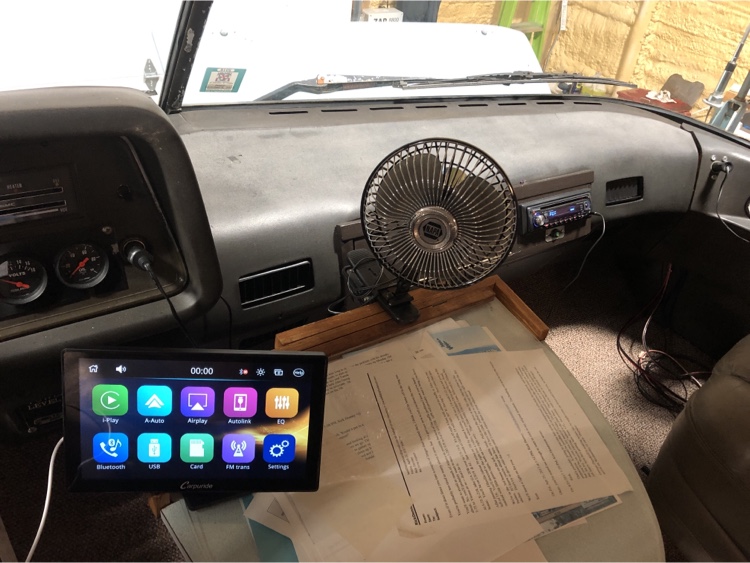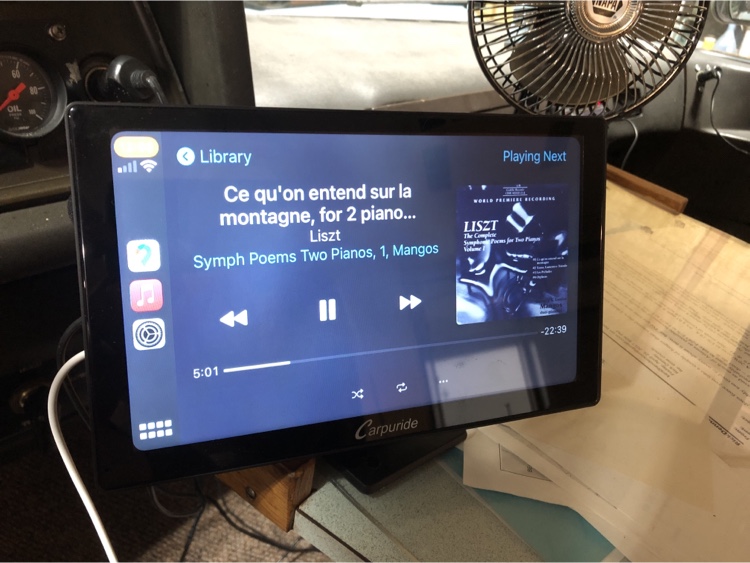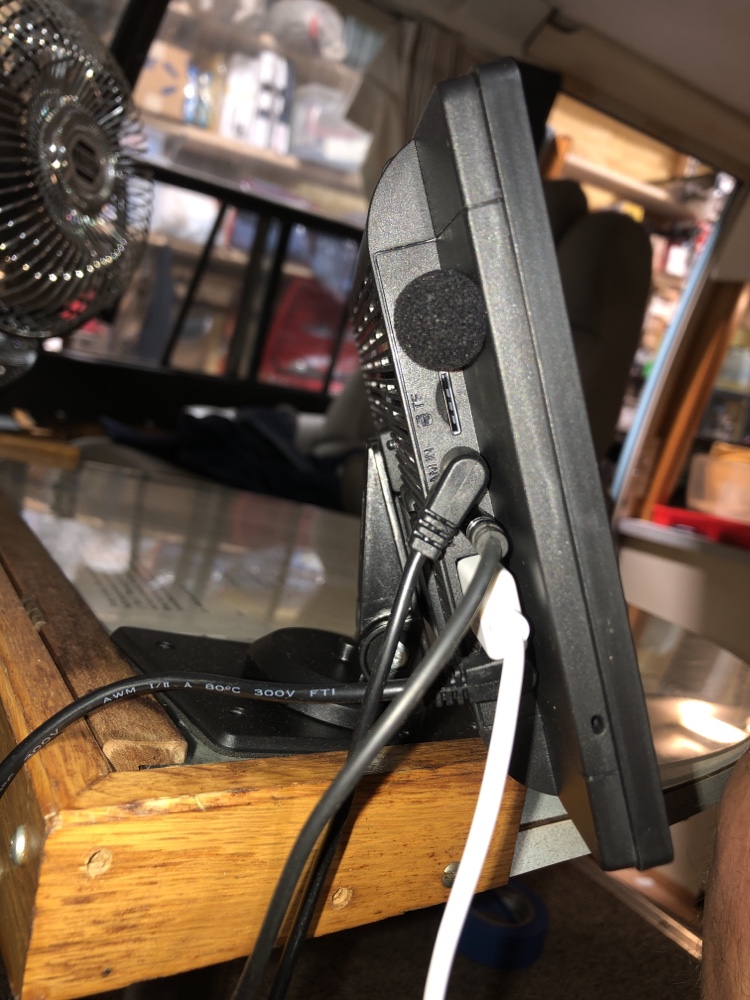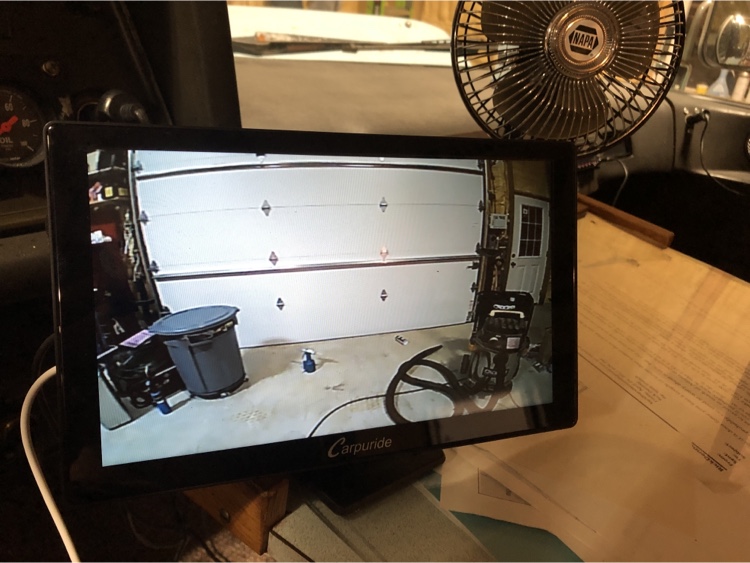Okay, it’s done.
What I installed: Pioneer GM-D1004 amp. Amir tested this and thought it pretty good for the money. I’m using it bridged into two Dahlquist ALS-3 mini speakers. The speakers themselves are interesting, being tiny three-way speakers with quite a complex crossover.
I also installed a Carpuride CarPlay touchscreen. That has been a good purchase so far. I mounted it on my center table. I made use of its support for a backup camera, but I primarily use it to play music, podcasts, and audio books, in addition to showing the phone’s navigation and integrating texts and phone calls into the sound system.
The front speakers are a new pair of 3.5” Dayton Audio full-range 4-ohm speakers which I’m running off the head unit. The head unit is a Kenwood KDC-MP238 from at least 18 or 20 years ago. Turns out, it’s got good power output so I’m still using it for the front speakers. With the Dahlquist speakers, the Kenwood is strictly a preamp. I’m feeling the Pioneer amp with line-level outputs from the Kenwood.
Here’s the amp. It’s mounted on the back of the fuse panel access cover, under the glove box.
Pardon the mid-project mess, but here’s the “lounge” looking forward. The Dahlquist speakers are mounted on the walls. No, they aren’t the same height. Compromises are necessary in this use case. They are small but heavy and I wanted them to stay put, so I mounted then where I could sink screws into one of the vertical aluminum struts that serve as wall studs. But I had to avoid the overhead cabinet on the left.
And closeups of the speakers:
Here’s the cockpit. You can see why I needed something. The head unit is handy for the passenger but unreachable when traveling alone.
Here’s the Carpuride unit from the driver’s perspective.
And its connections:
The Mangos performance of the Liszt Symphonic Poems transcribed for two pianos is a standard test for me.
No, the sound is no match for my home system playing this CD through a B&K Sonata MC-101 preamp, a Buckeye NC502MP amp, and Revel tower speakers. There’s a bit of ring in the mid-bass and and congestion when driven hard. And the interior of the coach is a sea of acoustic weirdness. But despite reports that these can’t take power, all I’ll say is that they can play LOUD with the 90 watts of the bridged Pioneer amp. And these things make far more bass than anyone would guess looking ant them. The sound is really rather decent—it certainly does what I hoped it would do. In 1979 when this coach was still fairly new, those little Dahlquist speakers would have been high end in a mobile application.
For those who are interested, the backup camera is awesome. I mounted it on a stalk over the rear-mounted spare tire. Running the wire from the camera to Carpuride unit was by far the most difficult part of the project. The GMC motorhome is quite compact, which means there is no wasted space through which one can run wires. I needed 45 feet of composite video cable to make the trip from end to end of a 23-foot motorhome. The camera is powered using the backup light circuit tapped at the nearby tail light. The Carpuride senses incoming video and switches to it automatically. Video quality is good enough. Rear video is transformative in a motorhome.
Rick “big trip coming up in September” Denney
